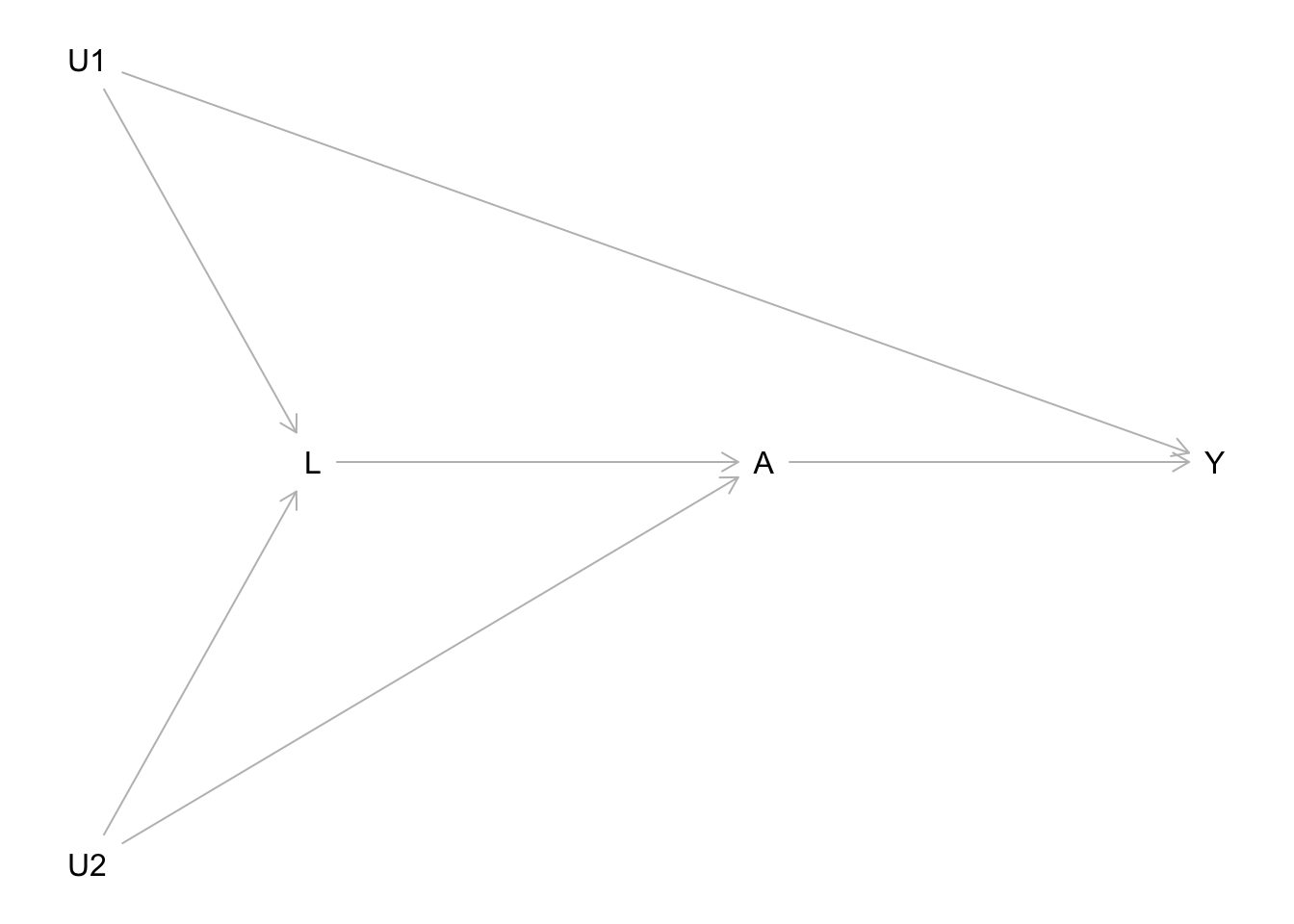Revisiting previous objectives
You can revisit any of the following objectives (excludes REGR1, IPTW1, TVTR1, and TVTR2).
EXCH1: Apply the concepts of marginal and conditional exchangeability to answer questions about (hypothetical) data on potential outcomes.EXCH2: Give examples of when marginal and conditional exchangeability would and would not hold in various data contexts.EXCH3: Explain why a direct comparison of the outcomes in the treated and untreated is misleading as an estimate of a causal effect.DESI1: Explain how randomized experiments relate to exchangeability.DESI2: Explain how quasi-experimental and general observational studies relate to exchangeability.DESI3: Compare the strengths and weaknesses of different study designs for answering a research question.PGRA1: Apply the Causal Markov assumption to express the joint distribution of data.CNCP1: Explain how causal and noncausal paths relate to exchangeability and causal effects.DSEP1: Apply d-separation to block noncausal paths in causal DAGs with and without unobserved variables.DSEP2: Apply strategies to deal with exchangeability problems caused by unobserved variables.DSEP3: Simulate data from a causal DAG under linear and logistic regression SEMs to check d-separation properties through regression modeling and visualization.DSEP4: Explain how d-separation relates to conditional exchangeability.TVTR1: Formulate research questions that can be answered in a time-varying treatment setting.TVTR2: Explain why regression does not generally work in time-varying settings with treatment-confounder feedback using d-separation ideas.
If you revisit any of these objectives, you must do so using the graph below. If revisiting an objective requires context for exactly what these variables represent, feel free to pick a context that is suitable for you.
library(dagitty)
dag <- dagitty("dag {
bb=\"0,0,1,1\"
A [exposure,pos=\"0.400,0.350\"]
L [pos=\"0.200,0.350\"]
U1 [latent,pos=\"0.100,0.200\"]
U2 [latent,pos=\"0.100,0.500\"]
Y [outcome,pos=\"0.600,0.350\"]
A -> Y
L -> A
U1 -> L
U1 -> Y
U2 -> A
U2 -> L
}
")
plot(dag)

